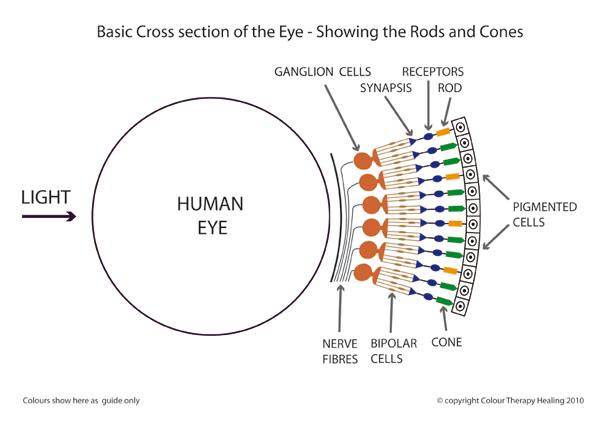When you have dyslexia, it feels as if letters simply jump around the page. This isn’t a rare issue, as 1 in 10 has dyslexia in the global population – which is around 700 million people worldwide. Due to this, it’s difficult to read and think, and it’s often blamed on the brain rather than the eyes. Well, that was until now. A new study published in Proceedings of the Royal Society B, seeks to reorient the way that we view the disease.
As The Guardian reports, a group of scientists in France has discovered a physiological difference in the eyes of those with dyslexia and those without. To grasp the difference, we need to understand how our eyes work.

You see, our eyes
How our Eyes WorThe Basics of Vision
Our eyes have small light-receptor cells called rods and cones. The center of a region called the fovea is dominated by cones, which are also responsible for color perception.
Color blindness can occur when one or more of the color cone cells are absent, nonfunctioning, or detect a different color than normal.
Now, the vast majority of people have a dominant hand, as well as a dominant eye. In both cases, those dominant features have more neural connections to the actual brain.
The Study
The study was comprised of 60 people who were divided evenly between those with or without dyslexia. What they found while researching the eyes of those without dyslexia, was that the arrangement of the cones in their eyes was asymmetrical. So, the dominant eye had a round, cone-free hole, while their other eye had an unevenly shaped hole.
In comparison, in people with dyslexia, there is no such asymmetry. Instead, both eyes have the same round hole. As a result, when they look at a page in the book, their eyes actually perceive the exact same mirror image. Because of this, their eyes end up fighting for visual dominance in their brain. This is why it’s difficult for a dyslexic person to distinguish between 3 and E and “b” and “d”. So when they’re looking at something in front of them, such as a page in a book, their eyes perceive exact mirror images, which end up fighting for visual domination in the brain. This could explain why it’s sometimes impossible for a dyslexic person to distinguish a “b” from a “d” or an “E” from a “3”.

The results of this study provide a new understanding in a field that is starving for answers. A study published earlier this year found that people with dyslexia were found to have a harder time remembering musical notes, faces, and spoken words. This new study demonstrates that it may not be the brain at the core of this issue, but rather that vision-related reading difficulties affected their brain plasticity.
If dyslexia is simply about misarranged light-receptors in the eye, diagnosing the disorder could be as simple as giving an eye exam. Thankfully, this wouldn’t mean invasive surgery or drugging – presently a large percentage of children with dyslexia are being placed on stimulants to “treat” their issue incorrectly.
To help cure the issue, the authors of the study used an LED lamp which blinks faster than the human eye can perceive. What this does is to “cancel out” one of the mirror images perceived by dyslexic readers. That, in turn, leaves only one true image. The volunteers who read with it called it a “magic lamp.” The researchers hope to further experiment with it to see if it’s a viable treatment option for the millions of people living with dyslexia.
Do you or anyone you know have dylexia? Does this change the way you view it? Tell us in the comments







